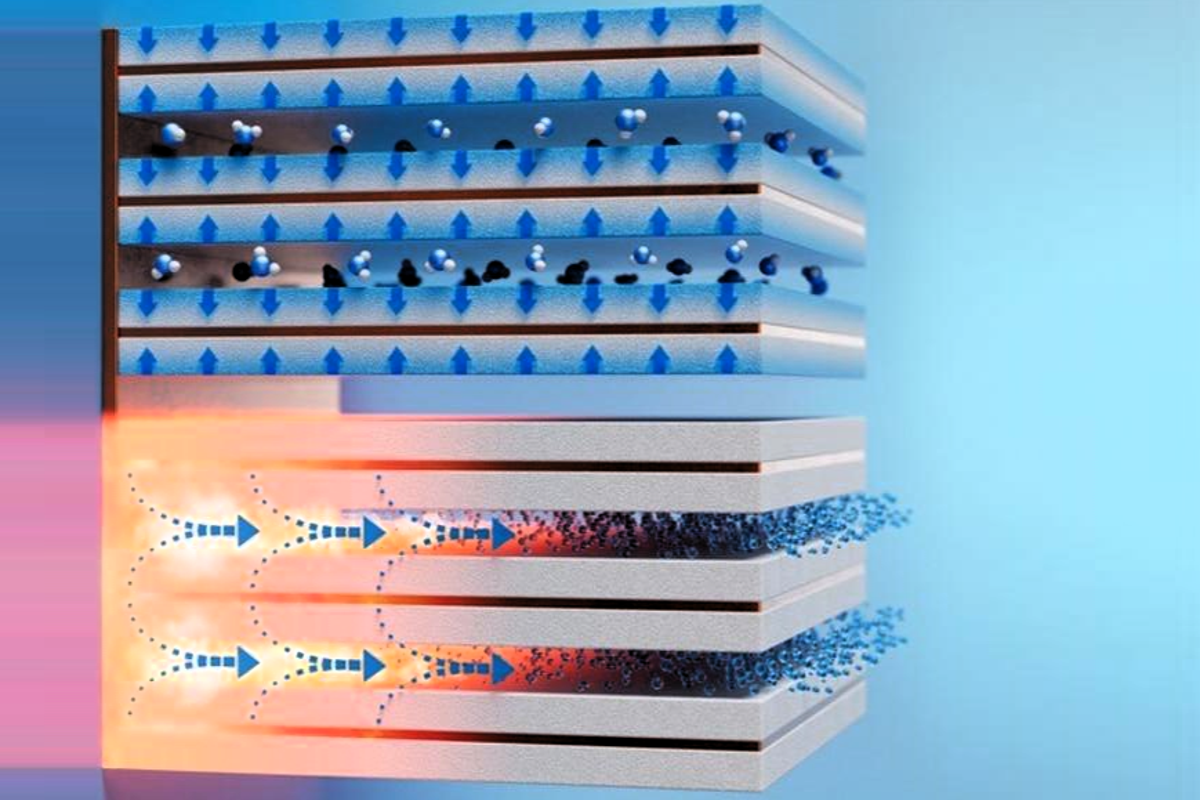The researchers designed a small device that harvested water from the air in the form of atmospheric humidity through the use of absorbent-coated fins. This system was described in the journal ACS Energy Letters, showcasing an efficient capture of water and then converting it into potable water upon heating. This thus offers huge potentials to bridge the gap in water shortage; the worst-hit being arid areas where traditional sources are very few. Advances in Water Harvesting
On the global scale, access to safe, clean water often depends on local sources—options that are severely limited in arid regions. There is always at least a little atmospheric water vapor, even in the driest of areas; if that could somehow be harvested, it would provide relief in areas where water is scarce. With that dire need in mind, a research team has developed a tiny, clever device with absorbent-coated fins, which trap moisture from the air and produce drinkable water when heated. Described in the journal ACS Energy Letters, this prototype is an increasingly water-scarce arid region-friendly solution to meet growing water demands.
The potential applications of the device are manifold: it can be applied to agriculture, industry, and disaster situations in which access to water is paramount. This technology could provide a sustainable, decentralized water supply by tapping atmospheric humidity, deployable of realization in remote regions or areas hit by drought.
Atmospheric Water: Abundant Yet Difficult to Collect
The atmosphere contains trillions of liters worth of freshwater in vapor. However, collecting this colorless, dilute gas is not easy. Previous technologies have focused mainly on the collection of dew and fog by pooling the liquid into containers. While these methods have proven effective in some areas, it is nevertheless inadequate in dry areas where the dew is minimal.
Some promise had been shown earlier by specialized materials such as temperature-responsive hydrogels, metal-organic frameworks, or zeolites, which extracted minute quantities of moisture from the air. These are basically sandwich-like materials that absorb water vapor and release it when it is heated. If these absorbents are to be useful for real applications, then indeed they must be sewn into compact, portable devices that harness waste heat sources—normally found in high-temperature systems or processes that emit heat as by-product.
Design and Development of the Humidity Harvester
For practicality, while focusing on efficiently creating electricity from air humidity, Xiangyu Li and Bachir El Fil with co-authors came up with a design for a humidity harvester fitting these specifications. According to the authors, they designed water-adsorbent “fins” by sandwiching a copper sheet between copper foams coated with commercially available zeolite. This design exploits high surface area and thermal conductivity, which are distinctive characteristics of copper for efficient operation of the device.
In sharp contrast to previous studies focused on material development only, this work coupled adsorption bed design with material properties. Thin and compact adsorbent fins have been designed by integrating these parameters, which have fastened the rate of water harvesting from air. Their design exposed them to maximum quota of air, thereby quickly capturing the moisture.
In proof-of-concept trials, the team designed a device with 10 small adsorbent fins set side by side on a copper base plate, spaced about 2 millimeters apart. This design maximizes the capture of moisture from desert-like air, which has 10% relative humidity. The fins soaked up in an hour and let go of captured moisture when the temperature at the bottom reached 363°F.
Performance and Efficiency
The device’s performance is impressive. From experiments of 24 collection-release cycles, scientists estimated that 1 liter of the absorbent coating on the fins could produce as much as 1.3 liters per day of quaffable water in air with 30 percent relative humidity. That is two to five times more than earlier devices, reflecting how well their design worked.
Testing scalability of this technology is, hence, another critical factor. Building on this, it may turn out that the modular nature of the device is scalable to larger systems and adaptable for a lot of different applications, varying from small personal devices to large-scale installations for communities. The possibility of using zeolite materials available in the market further increases its feasibility and affordability.
Future Implications for Water Harvesting Technologies
It also detects a large potential for fast moisture capture and water harvesting from dry air multiple times a day. Refined further, this system could be coupled to already existing infrastructures producing waste heat: buildings, industrial facilities, or means of transportation such as vehicles. Since residual heat is used, the extra energy input required for this device is very low, making it all the more sustainable and cheap.
Buildings incorporating the technology within an urban setting can harvest and supply water for various uses, easing pressure on municipal supplies. Installations with a large amount of waste heat, such as within specific industries, may benefit from using such a device to enhance their resources by collecting additional harvested water. Within the transport sector, this technology could be fitted within ships and trains, reducing reliance upon a constant water supply when voyages are extended.
Environmental and Economic Benefits
This technology holds substantial environmental benefits; some of these benefits are that this device curbs dependence on traditional water sources, consequently avoiding situations wherein these sources get over-exploited; net results would be the preservation of the natural water body and maintenance of ecological balance. Moreover, being a decentralized technology enables the production of water in remote regions also, without requiring any large-scale development in infrastructure.
It economically provides a low-cost solution for water generation. This is in terms of investment and running costs, since it uses commercial materials and available waste heat sources. This puts the technology at all levels of users, from domestic use to big organizations. This technology can also be used in areas facing serious problems relating to water supply to provide low-cost, reliable potable water for improved living standards and as a support factor for economic development.
Challenges and Future Research
This existing prototype, though very promising, requires further research and development in order to fine-tune this device for various conditions and applications. Challenges in enhanced durability of the absorbent materials, efficient moisture capture at ultra-low RH, and scalability of the technology for large applications are some of the key issues.
Further research will then be directed toward the discovery of new absorbent materials with high absorption capacity and quicker response times, while smart technologies like sensors and automated control systems can be integrated for better performance and user-friendliness. It shall be important to seek collaboration among researchers, industry, and policymakers in furthering this technology toward successful implementation.
In sum, this compact device for the harvesting of water from atmospheric humidity presents a breakthrough in sustainable water management. More than a scientific breakthrough along the lines of materials and engineering, this innovation addresses one of the global challenges in water shortage and climate change mitigation. The promise brought by the possibility of atmospheric moisture will provide a bright solution toward increasing the resilience of water to support sustainable development worldwide.

